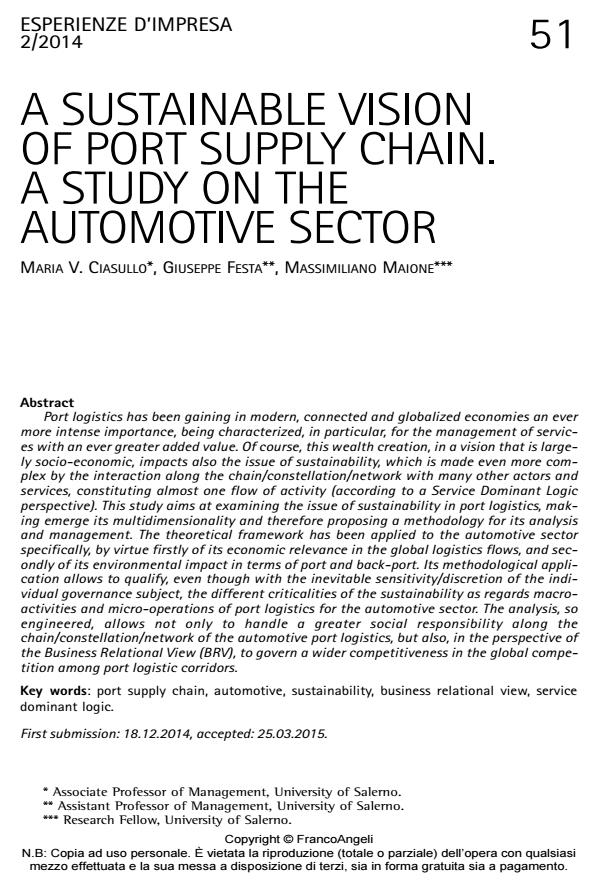A sustainable vision of port supply chain. A study on the automotive sector
Journal title ESPERIENZE D'IMPRESA
Author/s Maria V. Ciasullo, Giuseppe Festa, Massimiliano Maione
Publishing Year 2015 Issue 2014/2
Language Italian Pages 25 P. 51-75 File size 748 KB
DOI 10.3280/EI2014-002004
DOI is like a bar code for intellectual property: to have more infomation
click here
Below, you can see the article first page
If you want to buy this article in PDF format, you can do it, following the instructions to buy download credits

FrancoAngeli is member of Publishers International Linking Association, Inc (PILA), a not-for-profit association which run the CrossRef service enabling links to and from online scholarly content.
Port logistics has been gaining in modern, connected and globalized economies an ever more intense importance, being characterized, in particular, for the management of services with an ever greater added value. Of course, this wealth creation, in a vision that is largely socio-economic, impacts also the issue of sustainability, which is made even more complex by the interaction along the chain/constellation/network with many other actors and services, constituting almost one flow of activity (according to a Service Dominant Logic perspective). This study aims at examining the issue of sustainability in port logistics, making emerge its multidimensionality and therefore proposing a methodology for its analysis and management. The theoretical framework has been applied to the automotive sector specifically, by virtue firstly of its economic relevance in the global logistics flows, and secondly of its environmental impact in terms of port and back-port. Its methodological application allows to qualify, even though with the inevitable sensitivity/discretion of the individual governance subject, the different criticalities of the sustainability as regards macroactivities and micro-operations of port logistics for the automotive sector. The analysis, so engineered, allows not only to handle a greater social responsibility along the chain/constellation/network of the automotive port logistics, but also, in the perspective of the Business Relational View (BRV), to govern a wider competitiveness in the global competition among port logistic corridors.
Keywords: Port supply chain, automotive, sustainability, business relational view, service dominant logic
Maria V. Ciasullo, Giuseppe Festa, Massimiliano Maione, A sustainable vision of port supply chain. A study on the automotive sector in "ESPERIENZE D'IMPRESA" 2/2014, pp 51-75, DOI: 10.3280/EI2014-002004